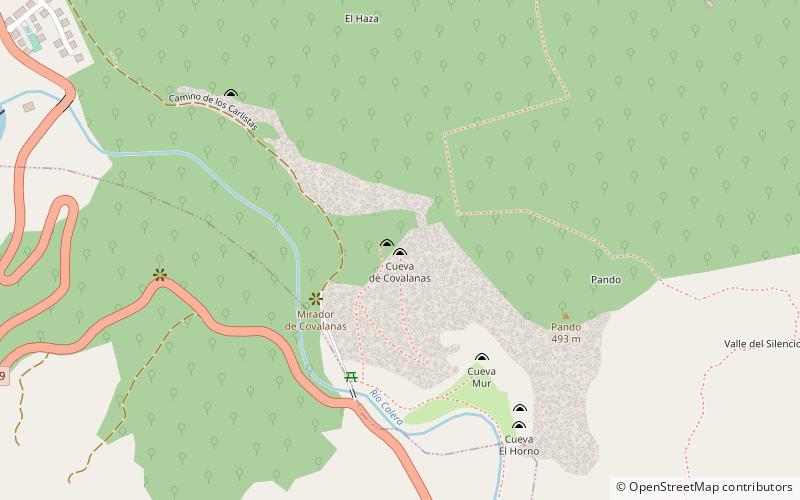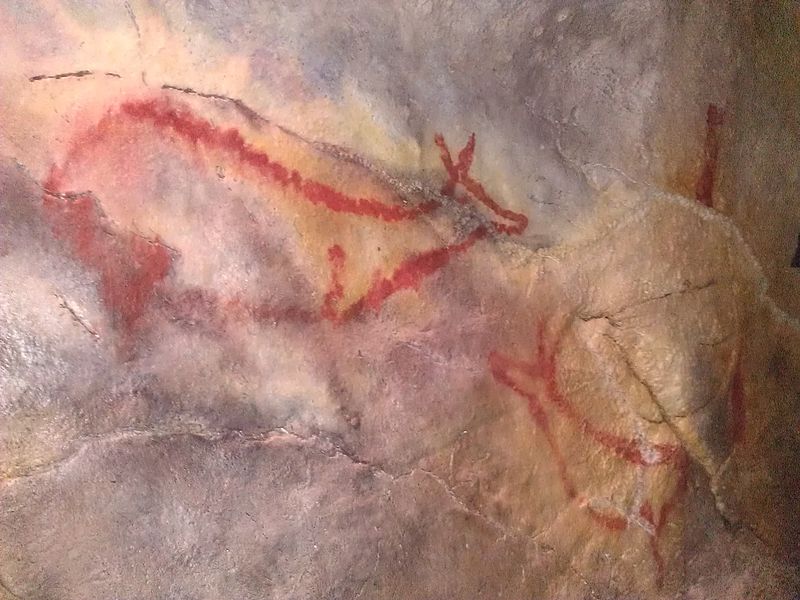Cueva de Covalanas


Facts and practical information
Covalanas - a cave near Ramales de la Victoria in the Spanish autonomous community of Kantabria. Post of prehistoric art.
The cave is located at a height of 320 meters on the north-east slope of the Monte Haza hill. It consists of two corridors that burn just behind the entrance. Hermilio Alcalde del Río and Lorenzo Sierra discovered her in 1903, who together with Marcelino Sanz de Sautola did the first research. The results were discovered in 1911 together with Henrim Breuil.
The rock paintings were made with red paint. They are dominated by deer images, some of which have only been half -outlined. In addition, horses and other animals were also presented, which could not be clearly recognized. The animals were painted by squeezing the tightly compressed points, forming in the lines. In addition, abstract drawings in the form of point signs, rectangles and oval appear on the walls of the cave. The chronology of paintings is not entirely certain, but they are most often associated with Solutrean culture and determines their age at 20-17 thousand. years ago.
Cantabria
Cueva de Covalanas – popular in the area (distance from the attraction)
Nearby attractions include: Cueva del Valle, El Mirón Cave, Torca del Carlista, Iglesia de Santa Marina.





